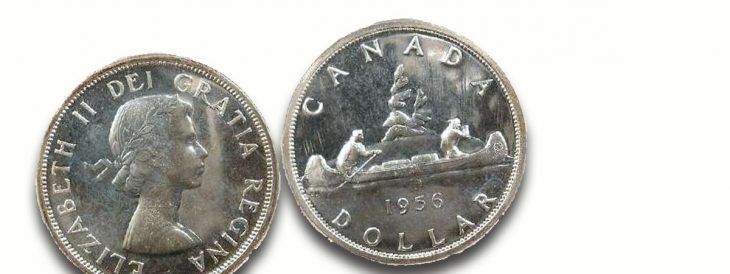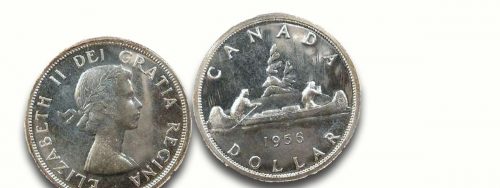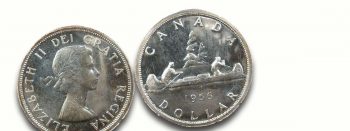Last updated on May 2nd, 2024 at 03:36 pm
Last Updated on May 2, 2024 Posted by Colonial Acres Coins
When it comes to collecting coins as a hobby or, in many cases, a day job, it pays to get to know the history of a trade down to the tiniest detail. However, considering the fact that money as a means of exchange has been around for many centuries, it makes sense that knowing everything about every currency is impossible. Yet, in the case of many countries around the world – Canada included – we’re in luck, as the Canadian Silver Dollar has a very clear and well-known history.
It is important to note that the First Nations, who inhabited Canada in the early 16th century, didn’t use currencies in everyday life; in fact, they traded in goods on a barter basis. Special objects had special social and economic value – for instance, a copper shield – and were considered a measure of wealth by some nations. However, Aboriginals traded with Europeans – they often traded fur for supplies – and were known to be fond of various silver objects.
Circa 1670, early French colonists also bartered goods, but had a habit of using metal coins, though there was never enough hard currency for
trade in the traditional sense. Fast forward to the 1800s ce and the economy was still dependent on coins from England and fur trade – regardless of British colonial rule. During the 1850s, 1, 5, 20 and 50 cent denominations were issued, all of which were minted in England as there were no minting facilities on Canadian territory. However, with the creation of the Dominion of Canada in 1867, the central government undertook to legalize its own currency as it assumed responsibility for banking and money.
Fast forward again to 1935 and the first wholly Canadian Silver Dollar issued by the Royal Canadian Mint, transformed into a Canadian institution just four years prior. The coin commemorated His Majesty King George V’s silver jubilee; the reverse design portrayed a Voyageur and an aboriginal paddling a birch-bark canoe, which was the work of Toronto sculptor Emanuel Hahn. The design grew into an enduring reminder of Canada’s early history. Additionally, one of the most recognizable details of the coin’s reverse was faint lines in the sky, representing the legendary Northern Lights.
In terms of being issued for circulation, the Canadian Silver Dollar lasted until 1967, which is when the silver dollar stopped containing actual silver. After 1967, the dollar coin was produced using nickel. It sh
ould be said, though, that there are still dollar coins being made that contain silver; however, they are non-circulating commemorative issues intended solely for the collector market.




